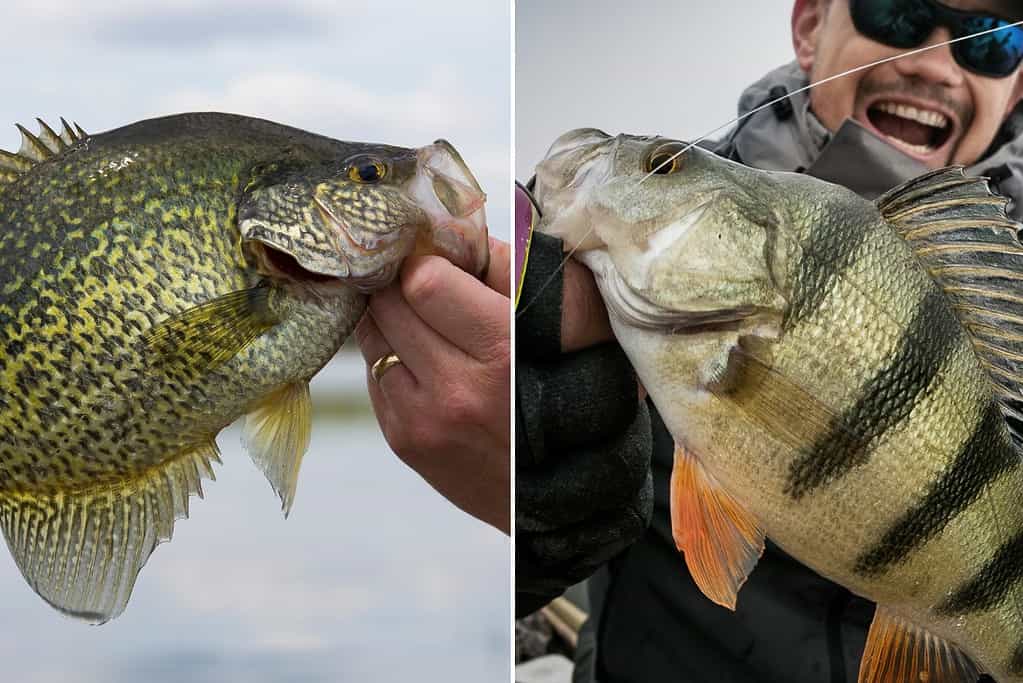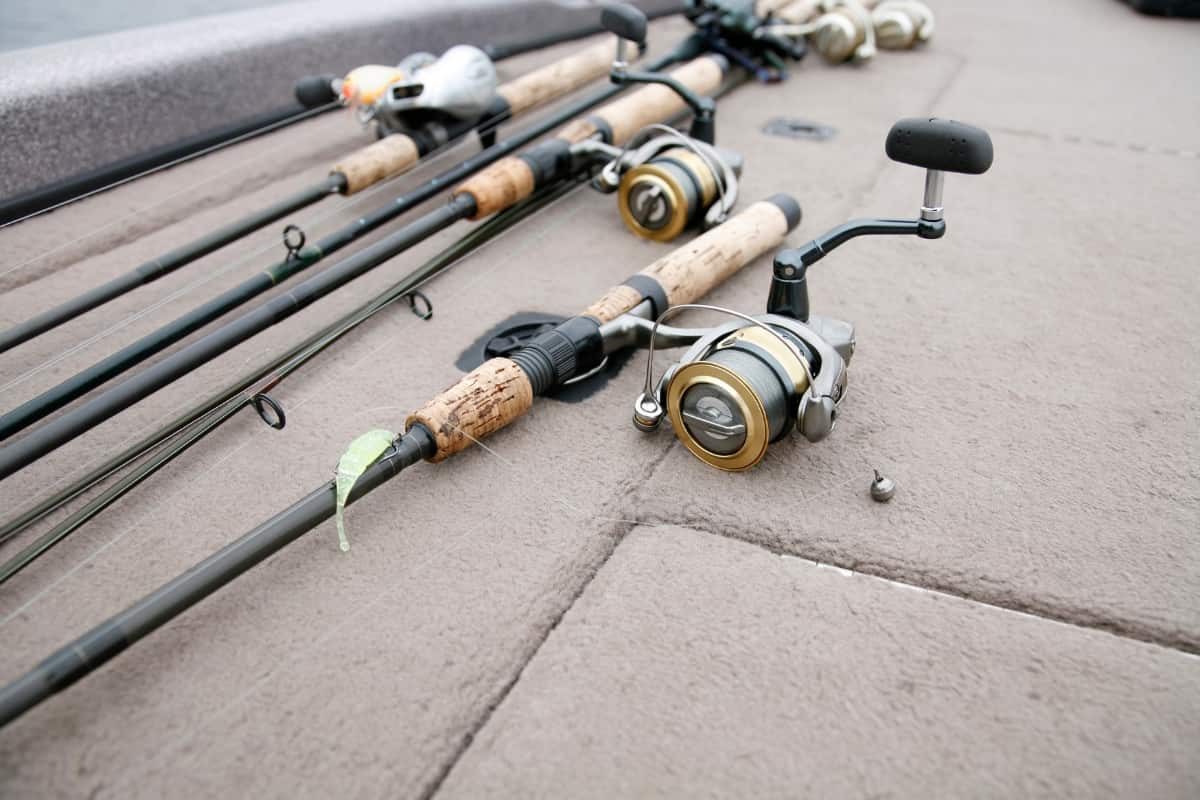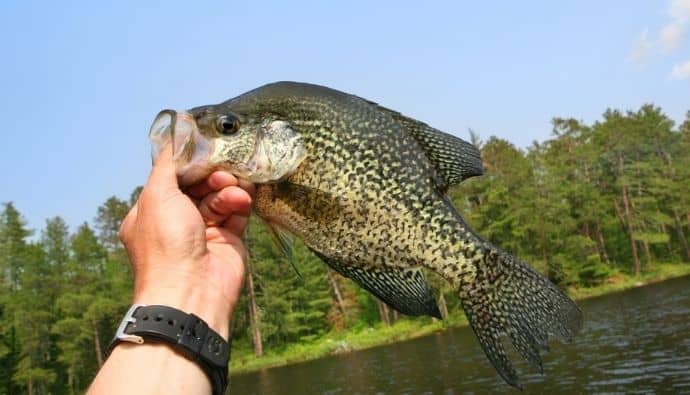Crappie and perch are both popular freshwater fish with unique characteristics that anglers should understand for successful fishing.
Crappies in white and black varieties are known for their spotted, silver-green bodies and preference for warmer, murky waters. They are often found in deeper water near cover. Perch, particularly yellow perch, sport vertical stripes on a golden body and inhabit cooler, clearer waters, usually in shallower regions near the shore. Fishing techniques for both involve using live bait and jigs, though the best time for catching may vary. In terms of taste, both fish are known for their mild, sweet flavor, with crappie being slightly sweeter and perch having a more pronounced fish flavor. Understanding these differences and similarities will enhance your fishing and culinary experiences with both species.
In this article, we’re diving deep into the underwater world of crappie and perch, two of the most popular freshwater fish among anglers. They might look somewhat similar at first glance, but trust us. They’re more different than you might think!

Crappie Overview
Crappie is from the Centrarchidae family which is the same family as the smallmouth bass and sunfish.
Appearance and Physical Characteristics of Crappie
Crappie is like a colorful canvas in the fish world. They come in two major varieties, each with its own special splash of color. Meet the White Crappie and the Black Crappie!
White Crappie
Imagine a tiny, shimmering silver vessel drifting gently through the water. That’s the White Crappie for you!
White Crappies have silver-gray exterior that sparkles in the aquatic sunlight, revealing an exquisite array of barely-there stripes cascading from its back down to its belly. As for size, these usually measures between a modest 6 to 10 inches, a small wonder in a vast watery world.
Yet, beneath its petite stature, lies a fascinating creature brimming with unexpected surprises!
Black Crappie
Turning our attention to the Black Crappie, we encounter a fish with a dash more mystery.
A shade darker than its white counterpart, this crappie showcases an enchanting silver-green canvas. However, its true charm lies in the galaxy of black spots sprinkled across its body, each one adding to its unique aquatic allure. It’s like a starry night sky, but underwater!
Both kinds of crappie share some family features.
They have a round body, almost like a sunfish, and a large mouth that extends to below the middle of their eye when closed – perfect for gobbling up small fish and insects! They also have sharp spines on their dorsal (top) fin, a little warning for anyone who might think about messing with them
Crappie Habitat and Behavior
Crappie are kind of like the nomads of freshwater bodies.
They’re found all over North America, from the great lakes of Canada down to the warmer waters of northern Mexico. They’re quite at home in lakes, reservoirs, and rivers, where they hang out in the middle or near the bottom of the water column.
Let’s think about their home as a big, watery apartment building.
If the surface of the water is the rooftop, crappie usually lives somewhere around the middle floors. They prefer water that’s not too hot and not too cold, with temperatures between 58 and 68 degrees Fahrenheit being just right.
Now, what’s a crappie’s daily routine like?
In a word – busy! Crappie are most active during dawn and dusk, a trait known as being “crepuscular.” This is when they head out for some grocery shopping, hunting for their favorite snacks like small fish, insects, and crustaceans.
And what about when it’s time to start a family?
Crappie are known as “broadcast spawners.” In simpler words, females lay thousands of eggs in shallow water nests built by males, who then guard the nests. This happens once a year, usually in spring when the water temperature is just right.
Fishing for Crappie
Ready to catch some crappie?
Great! Fishing for crappie can be quite an adventure. Whether you’re a seasoned angler or a beginner, here are some tips to help you reel in these feisty fish.
Techniques, Lures, and Bait
Fishing for crappie is like a game of hide and seek.
They love to hide in underwater structures like fallen trees or weed beds. So, one common technique is “casting and retrieving,” where you cast your line near these hiding spots and then slowly reel it in.
As for lures, think small and think shiny.
Small jigs (tiny, hook-like lures) that imitate minnows work great. Try colors like silver or white, which stand out in the water and attract crappie’s attention.
If you prefer using bait, again, mimic their natural diet.
Minnows, worms, or small insects like grasshoppers or crickets can be effective. Remember, crappie have small mouths, so keep your bait small too!
Best Times to Fish for Crappie
Crappie are a bit like us – they have their favorite times of the day and year.
As I mentioned before, they’re most active during dawn and dusk. So, these are the best times to head out with your fishing gear.
When it comes to seasons, spring and fall are prime crappie fishing times.
In spring, they move towards shallow waters for spawning, making them easier to find. In fall, they’re actively feeding to prepare for winter, so they’re more likely to bite.
Perch Overview
Appearance and Physical Characteristics of Perch
Let’s turn our attention to the other star of our story, the perch. There’s what they call the white perch and the yellow perch. The white perch, a cousin to the striped bass, is not a perch. In this article, specifically, we will focus on the Yellow Perch, a favorite among fishers in North America.
The Dazzling Yellow Perch
Picture a splash of sunshine in the water, and you’ve got the Yellow Perch.
It’s a bright, beautiful fish with a back that’s green to olive, blending into a golden yellow on its sides. And then, there’s its signature feature – those bold, dark stripes running vertically down its body. They make the Yellow Perch look like it’s wearing its own set of water shadows!
Regarding size, these aren’t the biggest fish in the pond.
They usually grow to about 6 to 10 inches long, though some can reach up to 12 inches. Despite their smaller size, they’re feisty and full of energy!
They have a few other distinguishing features, too.
They have a slightly elongated, torpedo-like body. Their mouth is smaller and does not extend past the eye. And like crappie, they have spines on their dorsal fin as a defense mechanism. They also have rough, ctenoid scales – so if you stroke a perch from tail to head, it feels rough, almost like sandpaper!
Perch Habitat and Behavior
Perch are adventurous little travelers, too, much like crappie.
They’re found in many different bodies of water, from tiny ponds to the enormous Great Lakes. They also travel quite a bit within their watery homes. So let’s dive in and learn more about their preferred habitats and behaviors!
Where Perch Love to Live
Just like us, perch have their favorite spots.
They usually prefer cool, clear water with plenty of vegetation. They’re like underwater gardeners, often found near plants and other submerged structures where they can find food and hide from predators.
While crappie likes to hang out in the middle or bottom of the water, perch are more flexible.
They can be found at various depths depending on the time of day and year, and the water temperature. But generally, they’re most commonly found in the shallows near the shore.
Eating and Spawning Habits
When it comes to food, perch aren’t picky eaters.
They’ll happily munch on insects, small fish, and even their own eggs or young! They’re most active during the day, particularly in the early morning and late afternoon.
And when the water starts to warm up in the spring, it’s time for perch to spawn.
This usually happens in shallow water. Perch females lay strings of eggs in a jelly-like mass, which sticks to plants and other underwater structures. After that, the males fertilize the eggs. It’s a bit different from crappie spawning, but just as fascinating to watch!
Fishing for Perch
Imagine the thrill of feeling a tug on your line and reeling in a lively, shimmering perch!
Whether you’re a seasoned angler or a beginner, fishing for perch can be an exciting and rewarding experience. Here are some pointers to help you on your fishing adventures.
Techniques, Lures, and Bait
Perch, with their curious and adventurous nature, are likely to bite on a variety of lures and bait.
One popular method for catching perch is still fishing with natural bait. Small minnows, worms, or even bits of shrimp can prove irresistible to a hungry perch. Remember, perch have small mouths, so keep your bait small too!
If you prefer using lures, small jigs, spinners, or spoons can work wonders.
Try different colors and see what works best – perch aren’t picky and are known to respond to a variety of colors.
One technique specific to perch fishing is known as “tightlining.”
Picture this: you’re delicately balancing your fishing line between alert tension and strategic relaxation.
This delicate equilibrium is key when you’re on the hunt for perch. Their bites, often as light as a feather’s touch, require your line to be taut enough to sense the slightest tug. Yet, it’s crucial to leave it loose enough to ensure our finned friends meet no resistance. It’s an art, truly, this dance of tension and relaxation, subtly increasing your chances of reeling in a successful catch.
Best Times to Fish for Perch
Just as we humans have our breakfast buzz and dinner-time delights, perch also follow a similar rhythm.
Their days are punctuated by bursts of activity around feeding times. This typically occurs as the early morning sun splashes across the water’s surface, and again when the golden hues of late afternoon stretch their long shadows. In these magical windows of time, perch are at their most lively. But don’t let that limit you – perch can be caught at all times of the day.
In terms of seasons, you can catch perch year-round, but spring and fall are generally the most productive.
During these seasons, perch move into shallower water, which can make them easier to catch. So grab your fishing gear and hit the water! Fishing for perch is a fun and rewarding way to enjoy nature.
Crappie vs. Perch Family: Key Differences and Similarities
It’s time to bring our underwater explorers together and compare notes.
How do crappie and perch fish measure up against each other? A lot of people mistake these two as the same fish. They even come from different fish family. Here are the differences and similarities between the two.
Physical Features: Stripes and Spots
Both crappie and perch have unique appearances that make them easy to distinguish from each other.
Crappie, whether white or black, sport a spattering of dark spots on their silver-green bodies, with a silhouette that’s somewhat rounded and compressed.
Perch, on the other hand, carry vertical stripes on their yellow to golden bodies, looking like little underwater tigers. Their bodies are more elongated and torpedo-like compared to crappie.
Crappie only have one dorsal fin unlike the perch that have two dorsal fins.
Habitat Habits: A Study in Preferences
Crappie like warmer, murkier waters tend to stay closer to cover and deeper water, especially during the day.
Perch prefer cooler, clearer waters, often staying in shallower regions near the shore. However, they’re both found in a variety of North American waters, from small ponds to large lakes.
Feeding and Spawning: A Circle of Life
In terms of behavior, both crappie and perch are opportunistic feeders, dining on small fish and insects.
Their spawning habits differ slightly, with crappie preferring to build nests in warmer water and perch laying strings of eggs in cooler, shallow water.
Fishing Techniques: An Angler’s Approach
Fishing techniques for crappie and perch have some overlap, with natural bait and jigs being effective for both.
The main differences lie in the specifics, such as the preferred depth and time of day. Crappie fishing is often best in the early morning and late evening, while perch can be caught throughout the day but are especially active during feeding times.
Culinary Clash: A Tasty Comparison
Now for the taste.
Both fish are known for their mild, sweet flavor and light, flaky white meat. Crappie tastes slightly sweeter, while perch have a more pronounced fish flavor. Both taste great when fried but can also be baked, grilled, or used in a variety of dishes. Truly, you can’t go wrong with either choice!
Conclusion
In conclusion, while crappie and perch differ in physical characteristics, habitats, behaviors, and culinary aspects, they share more in common than one might think.
Both provide anglers with rewarding fishing experiences and offer delicious meals to those who enjoy seafood. Whether your preference leans toward crappie or perch, understanding their unique attributes only enhances the experience of fishing and eating these marvelous creatures.





 Facebook
Facebook YouTube
YouTube









